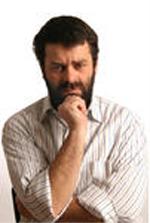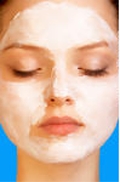Be openminded with your sex life
Sexual dysfunction or sexual malfunction is difficulty during any stage of the sexual act (which includes desire, arousal, orgasm, and resolution) that prevents the individual or couple from enjoying sexual activity. It is unclear exactly what causes vaginismus, but it is thought that past sexual trauma (such as rape or abuse) may play a role. Another female sexual pain disorder is called vulvodynia or vulvar vestibulitis. In this condition, women experience burning pain during sex which seems to be related to problems with the skin in the vulvar and vaginal areas. The cause is unknown. Sexual dysfunctions are more common in the early adult years, with the majority of people seeking care for such conditions during their late twenties through thirties. The incidence increases again in the geriatric population, typically with gradual onset of symptoms that are associated most commonly with medical causes of sexual dysfunction. A recent study estimates that 30 million men suffer from various degrees of erectile dysfunction. This can range from mild to severe. It is clearly an age-related phenomenon with the prevalence of erectile dysfunction increasing significantly with age. Surprisingly, by the time men reach 40, 5% of them are completely impotent never achieving an erection rigid enough for penetration. Approximately 15% have significant problems achieving or maintaining an erection. Abnormal levels of certain hormones, such as testosterone, thyroid hormone and a pituitary hormone known as prolactin, can interfere with erections and sex drive (libido). This is an uncommon cause of erectile dysfunction. There are many effective treatments for erectile dysfunction. The most popular option is a class of drugs called phosphodiesterase type 5 (PDE5) inhibitors, which includes sildenafil (Viagra), vardenafil (Levitra) and tadalafil (Cialis). These drugs, taken in pill form from zero to 60 minutes before sexual activity, work in approximately 70 percent of men, though they are less effective in men with neurological causes of erectile dysfunction such as nerve damage from prostate surgery, diabetes or spinal cord injury. |
What is our skin?
Skin has pigmentation, provided by melanocytes, which absorbs some of the potentially dangerous radiation in sunlight. It also contains DNA repair enzymes which reverse UV damage, and people who lack the genes for these enzymes suffer high rates of skin cancer. One form predominantly produced by UV light, malignant melanoma, is particularly invasive, causing it to spread quickly, and can often be deadly. Human skin pigmentation varies among populations in a striking manner. This has sometimes led to the classification of people on the basis of skin color. See the article on human skin color. The skin is often known as "the largest organ in the human body". This applies to exterior surface, as it covers the body, appearing to have the largest surface area of all the organs. Moreover, it applies to weight, as it weighs more than any single internal organ, accounting for about 15 percent of body weight. For the average adult human, the skin has a surface area of between 1.5-2.0 square metres, most of it is between 2-3 mm thick. The average square inch of skin holds 650 sweat glands, 20 blood vessels, 1000 melanocytes, and more than a thousand nerve endings. The dermis can be split into the papillary and reticular layers. The papillary layer is outermost and extends into the dermis to supply it with vessels. It is composed of loosely arranged fibres. Papillary ridges make up the lines of the hands. The reticular layer is more dense and is continuous with the hypodermis. It contains the bulk of the structures (such as sweat glands). The reticular layer is composed of irregularly arranged fibres and resists stretching. Skin can be dividided into thick and thin types. Thick skin is present on the soles of the feet and the palms of the hands. It has a larger stratum corneum with a higher keratin content. Thick skin does not grow hair; its purpose is to help grip. Thin skin is present on the bulk of the body and has a smaller stratum corneum and fewer papillae ridges. It has hair and is softer and more elastic. The characteristics of the skin, including sensory nerve density and the type of hair, vary with location on the body. |
What is obese?
Scale weight is a total measure of bone, muscle, fluid, organs, and fat. Weight measurements reflected by the bathroom scale or compared to standard height and weight tables does not allow for weight changes which occur due to aging, exercise, or frame size. Therefore, more emphasis should be placed on body composition and healthy lifestyles with less on body weight alone. Research points to differences in appetite control and energy expenditure. It is important for obese people not to hold themselves responsible for their condition. Many people are tempted by ads that use celebrities to tout liquid fasting diets for weight loss. Ads claim quick and easy weight loss with use of such products. Very obese patients may be referred to these types of diets. Their diets are carefully supervised by their healthcare provider. Binge eating can be triggered by many things such as stress, depression, loneliness or anger. Food is used as a way of dealing with issues other than hunger. The following guidelines have been developed that may help control binge eating: - Eat only at established meal times. - Avoid keeping foods around that may trigger bingeing. - Avoid fad or very restrictive diets. - Keep a food diary and log to assess what prompted the binge. Binge eating can be difficult to control because many people turn to food as a way of dealing with their feelings. Keeping a food diary can be beneficial in identifying specifically what feelings are likely to trigger binge eating as well as what types of foods are consumed during a binge. Strategies can then be employed to reduce the urge to binge when the impulse strikes. |
|
|
Read our other articles:
Learn symptoms of depression
Natural herbal diet pills Hoodia that stops the appetite
Treatment of hair loss
Tooth crowns
Buying prescription medicine online
Women's discomfort from premenstrual syndrome and natural health remedies